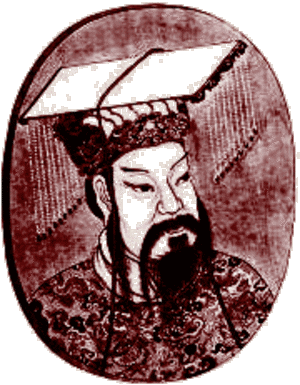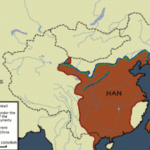Think you understand the Chinese color beliefs? Were you aware that in ancient China, the color red was not even recognized as being something special? It is a myth to think that the Chinese have always had a special connection to the color red. Today, red is one of the most well-known colors in China however five thousand years this was very different.
During the reign of Huang Di or Huang Ti, better known as the Yellow Emperor, people actually worshiped the color yellow. He is the emperor that is said to be the ancestor of all Han Chinese people and is believed to reign around 2697 BC to 2598 BC. He was coined the name “yellow emperor” because his army tribe honored the value of the yellow earth, which is the symbol of farming. During this reign, his tribe were able to practice medicine practices, make bronze coins, created silk weaving for clothing and much more. At the end of his life, a yellow dragon is said to have appeared and carried him off to the heavens by invitation of the gods.
Dating back to the time of the Yellow Emperor, the five elements are water, fire, wood, metal and earth has been important. Corresponding to the five elements respectively are the five colors black, red, blue-green, white and yellow. Hence, the Yellow Emperor was named thus by the idea of the Feng Shui yellow earth. Before understanding the important of yellow, the first two colors where black and white. Therefore, mysterious black resembles the dark westerly skies that are thought to be the heavens. Black is the beginning and white is the end. So, white is known for purity or brightness and is used at times of mourning.
Today after hundreds of years after the yellow worshipping, fire red is the most popular color and is thought of when thinking of China. It is better known today to symbolize happiness and joy during holiday seasons. The color red has had its difficulties though throughout the years. For instance, it was the symbolic color of the Communist takeover of China. During those years, it held the symbol of blood, death and radical actions caused by the Communist parties. It is thus interesting to note that the Chinese still today, after the years of Communist actions, that red is used for some of the happiest moments in life: births, weddings, holidays and so on.
Throughout the years, and even today, colors are very important to the existence of the Chinese people. Today:
1. Yellow is still reserved for royalty. Clothing and objects that are yellow in color still resemble a higher social status. Although each dynasty designates each official rank with their own color, yellow is reserved for the emperor himself. It is also the main color of Buddhism; thus it represents being free from worldly cares.
2. Red is still used for happiness and joy. In fact, after the Ming Dynasty, only the Emperor’s close relatives could have homes with red walls and yellow roof tiles. Peasants could only live in homes made with blue bricks and roof tiles. Today though, most houses are made of black tiles and white walls.
3. Blue-green is a symbol of spring when everything is filled with vigor and vitality. Therefore, someone that is hoping for longevity and harmony will decorate with blue-green colors.
4. White is still a symbol of the unknown and purity. It is white is the color of mourning, death, and ghosts. Therefore Chinese people will wear white during a funeral or while summoning ghosts.
5. Black is still used as the symbol of winter and the westerly skies which beholds the heavens. It is used for times of the unknown and for the winter months.
Colors are important to the establishment of the Chinese Society. They resemble the five essential elements which are better known through the usage of Feng Shui. Since these five elements setup the existence of living on this earth, it is important to understand what these colors symbolize. For further studies on colors in relationship to everyday life of China’s society, seek poetry written by Cui Hu, Dynasty clothing or even pottery from ancient times. It is amazing to learn more about this relationship and to get a better understand of the true essence of the five elements of living.


